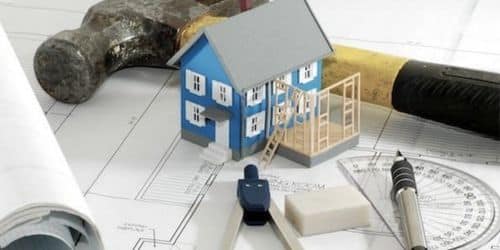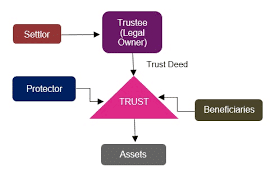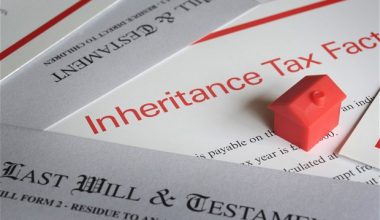Home renovation loans are a popular and widely used method of financing property upgrades, repairs, and enhancements. This is because loans for home upgrades of all types provide easy access to funds that can help you pay for a wide range of beneficial real estate projects and improvements. Do you want to know how to obtain a home improvement loan, what loans are available to you, and how to secure financing as a borrower? There is no need to look any further! Let’s take a look at the home renovation loan calculator, how to acquire a no-equity home renovation loan, and how to get veterans home renovation loan rates.
What is a Renovation Loan?
The after-renovation value of the home is a key factor in determining the amount of a home renovation loan. Renovation loans evaluate how much a homeowner can borrow based on a home’s expected after-renovation worth rather than its existing value. This provides homeowners with an upfront credit for the increase in home value that results from the intended renovation.
It’s easy to get this term mixed up because some of the products marketed as “home improvement loans” are rebranded unsecured personal loans or credit cards that aren’t ideal for most projects due to their high-interest rates, shorter terms, and limited loan limits.
RenoFi loans, construction loans, Fannie Mae HomeStyle loans, and FHA 203(k)s are a few examples of home renovation loans that use the after-renovation value.
How Home Renovation Loans Work
Do you want to know how home renovation loans work? In general, knowing that they are generally applicable to a large range of different home renovations, upgrades, or repairs is helpful.
As you start to evaluate and investigate home renovation loan choices, you will notice that personal loans are a popular option for millions of property owners each year. This is because a personal loan can be used to finance almost any type of home renovation project.
If you decide on a personal loan, keep in mind that it might be financed with either unsecured or secured debt. If you want to apply for a personal loan to help pay for your home renovations, the process is likewise pretty quick and uncomplicated.
Home Renovation Loan Calculator
After determining how much your home improvement project will cost, the next step is to figure out how to pay for it. Use this personal loan calculator to calculate the total interest and monthly payments for a home renovation loan depending on the loan term and interest rate you choose.
Understanding your home renovation loan calculator results
The home renovation loan calculator will display the following information for you:
- Monthly payment: the amount you should expect to pay each month A longer term will reduce your monthly payments while increasing your total interest.
- Total interest estimated: The total amount of interest you will pay throughout the life of the loan. Your interest rate is generally determined by factors such as your credit, income, and debts. The amount, period, and purpose of the loan can all have an impact on the interest rate.
- The total amount repaid: The total amount of money repaid at the end of the loan. This figure is determined by the amount borrowed and the interest rate.
Home Renovation Loan Rates
Currently, average home renovation loan rates range from 6.50 percent to 36 percent. While numerous factors influence the rate you’re charged, the most essential is usually your credit score; the higher your credit score, the lower your rate. Many lenders list their minimal credit score requirements as well as the credit score required to get the best deal.
Even if your credit score is near to the minimum, prequalification is still worthwhile because lenders may consider your annual income, debt-to-income ratio, and employment status when setting your rate.
Veterans Home Renovation Loan
A Veterans Affairs renovation loan, often known as a VA rehab or reno loan, is a type of home loan that enables borrowers to include the cost of specific repairs or renovations in the loan amount.
This allows Veterans Affairs renovation loan borrowers to purchase a home that requires repairs or upgrades without having to obtain a separate loan; instead, the repair costs and purchase price are wrapped into a single loan with a single monthly payment. You can refinance your current home loan using these options as well.
Who Qualifies for a Veterans Affairs Renovation Loan?
You must be qualified for a VA loan to obtain a Veterans Affairs renovation loan.
Minimal Service Requirements
To start, you will want a certificate of eligibility (COE), which proves that you match the minimum service requirements for a VA loan.
Veterans or active duty servicemembers who have performed 90 consecutive days of active service during wartime or 181 days during peacetime are normally eligible for a VA loan. The National Guard or Reserve members must serve for a minimum of six years.
Surviving spouses who meet the requirements are also eligible for a VA loan.
Credit Lender Standards
In addition to completing the basic service requirements, you must also meet the credit standards of your lender. The VA does not have a minimum credit score requirement for the loans it guarantees. Lenders, on the other hand, can and typically do have their restrictions. To qualify for a Veterans Affairs home renovation loan, you’ll generally need a credit score of at least 620, though some lenders may require higher scores.
Eligible Property
VA loans are intended for the purchase of a primary residence. There are, however, techniques that can assist eligible military members in purchasing a second home with the help of these loans.
You can also use your VA loan to buy a four-unit multifamily property. The house would have to be your principal residence for a year. After that, you could buy another multifamily home and resume the process.
Allowed Improvements
VA renovation loans can only be used for repairs or upgrades that improve the property’s safety or livability. Luxurious additions are not permitted, so you cannot, for example, use the funds to install a pool.
Maximum Renovation Cost
VA renovation loan lenders have a limit on repairs and improvements. The maximum renovation amount is frequently $50,000, however, it varies according to the lender.
How to Apply for a Veterans Affairs Home Renovation Loan
Let’s walk through the process of applying for a VA renovation loan step by step.
#1. Get an Eligibility Certificate (COE)
You must first determine whether you are eligible for a VA loan. To acquire your COE, you can apply online through the VA’s eBenefits portal or work with your lender.
#2. Locate a Lender and Get Preapproval
You’ll work with a lender to obtain preapproved for a loan once you’ve located one that provides VA renovation loans.
#3. Get Quotes from a VA-Registered Contractor
The VA does not approve contractors, but they must register with their nearest VA Regional Center to get a VA builder ID number. You can learn more about VA-registered contractors in your area.
#4. Do a VA Appraisal
A VA home appraisal will be performed by a VA-certified appraiser, and your lender will work with you to schedule it. This appraiser will assess the as-completed value, or the property’s value after all repairs and improvements have been done. This figure is significant.
#5. Complete the VA Rehabilitation Loan
You will close on the loan once everything has been approved, from the repairs to the loan terms. Renovations will begin after the closing.
#6. All Repairs and Upgrades have been Completed
You will guarantee that the contractor completes the renovations. The repair funds will be managed and disbursed by your lender.
#7. Final Inspection
A VA appraiser will inspect the home to ensure that the project was finished and that it meets all of the VA’s basic property requirements.
How to Get a Home Renovation Loan
Compare lender offers with other options, check your rate and monthly payments, prepare documents, and apply to acquire a home renovation loan. Let’s break those steps down:
- Assess the options. Compare the finest home renovation lenders to one another as well as to other financing choices like credit cards and home equity loans. You want the one with the lowest total interest cost, manageable monthly payments, and a schedule that works for you.
- Examine your interest rate and monthly installments. Before proceeding, you should have a firm cost estimate for the job. When applying for a personal loan, many online lenders and banks allow applicants to pre-qualify to evaluate prospective offers, however, you will be asked how much you want to borrow. A soft credit pull is required for pre-qualification.
- Create documents. Gather the documents you’ll need to apply once you’ve decided on a lender. W-2s, pay stubs, proof of address, and financial information are examples of such documents.
- Apply. Smaller banks and credit unions may require you to apply in person, while larger banks and online lenders have online applications. Several lenders can decide on your application within a day or two. After that, the monies should be in your bank account in less than a week.
Home Renovation Loan No Equity
The majority of no-equity home renovation loan programs are intended to assist you in financing repairs or renovations that will make your home more livable or functional. Home renovation loans backed by the Federal Housing Administration (FHA) are more restrictive in terms of the kinds of projects that can be funded. Yet even if you have little to no equity, there are renovation loan choices that will give you greater freedom to handle the job yourself or offer a wider range of acceptable renovations.
Good uses of a home renovation loan with no equity
Lenders may demand repairs that jeopardize the property’s safety, such as a leaking roof or a broken window. After that, you can focus on renovations that will increase the value of your home, such as a kitchen or bath remodel.
According to HUD, the following are eligible home repairs and improvements that can be paid for with no-equity home loans. The following structural upgrades will increase your home’s safety and habitability:
- Replaced roof and gutters
- A new air conditioner
- Upgrades and replacement of plumbing and electrical systems
Bad use of a Home Renovation Loan with No Equity
Before you build a wood deck or a sunroom, check out Remodeling magazine’s current Cost vs. Value Study to determine which home improvements will give you the most bang for your buck. You may save money on pricey upgrades that will not increase the value of your home in the long run.
The following home renovations are often not allowed for no-equity loan products by government-backed renovation loans:
- Jacuzzi bathtub
- Pool
- Adding or expanding a room
- Adding or expanding a room
Pros and Cons of Home Renovation Loan
There are pros and cons of using home renovation loans, as with any other type of real estate finance.
Pros
- Capable of funding a wide range of home improvements, repairs, and upgrades
- Make it possible for people and families to receive finance in a variety of ways that are both rapid and efficient.
- There are numerous options accessible to match your specific budget and financial situation.
- Commonly available from a range of lenders in various forms.
Cons
- It could be necessary for you to borrow money from your home equity or take a second mortgage.
- If you fail to repay secured debts, your home may be at stake.
- Some loan types may have higher interest rates.
- Your alternatives may be limited if you have a low credit score or a poor financial history.
Can I borrow money to renovate my house?
Yes. Banks, credit unions, and a variety of online lenders all provide unsecured personal loans for home improvement. You do not need to use your home as collateral to qualify for the loans because they are unsecured. Your interest rate and qualifying are heavily influenced by your credit score.
Are renovation loans worth it?
Yes. The reduced rates and closing expenses of a home renovation loan make the most sense if you want to make immediate renovations to your new home.
Which bank is best for a renovation loan?
Wells Fargo is the best bank for home renovation loans since it offers funding of up to $100,000, which can help you finance expensive home repair projects.
What is the smartest way to pay for home renovation?
The cheapest method of paying for home renovations is cash. There are no interest or origination costs, and there are no payback terms. According to a 2021 Bank of America study, 62% of homeowners making big changes to their homes planned to pay for them using savings.
How do people afford home renovation?
Innovative Ways to Finance Home Renovations:
- Refinance your home loan.
- Apply for a Home Equity Line of Credit (HELOC).
- Use crowdsourcing.
- Be inventive with your money-making methods.
- Take your savings seriously.
What credit score is needed for a home improvement loan?
Most lenders want a credit score of 660 or higher for a home improvement loan. Although lenders do not normally provide “home renovation loans,” they do provide personal loans that can be used for nearly any purpose, including home improvements.
Conclusion
So, what exactly is a home renovation loan, and what exactly are its benefits? In conclusion, home renovation loans are intended to assist you in financing various types of repairs, improvements, and real estate enhancements.
But, when you hear many homebuyers talk about home renovation loans, be aware that they’re usually referring to personal loans marketed under the umbrella of “home improvement loans.”
Related Articles
- VETERANS FIRST MORTGAGE 2023 REVIEWS
- How To Flip a House In 2023| Beginners Step-by-Step Guide
- House Renovation: Guide on Cost and How to Start
- Reasons to Apply for Forbrukslån
- BEST HOME IMPROVEMENT LOAN IN 2023






